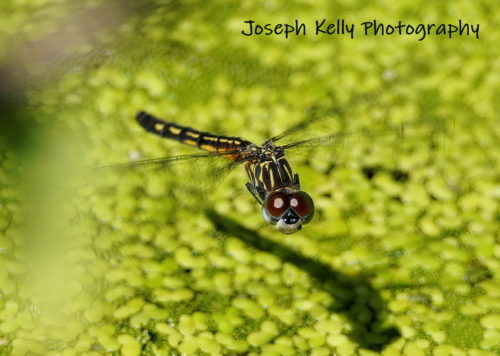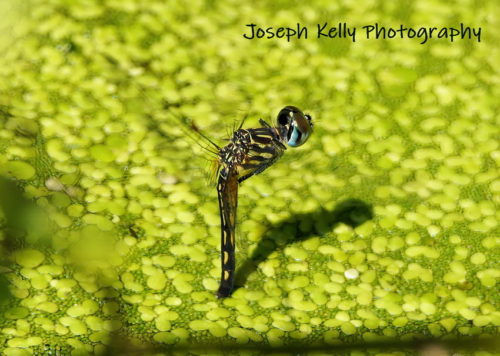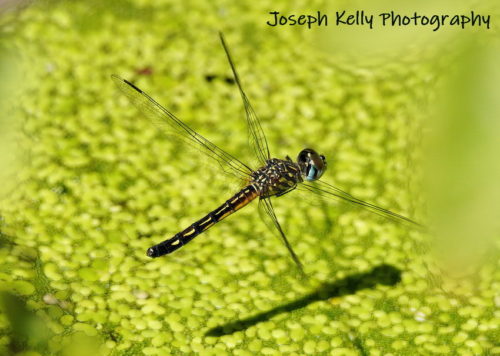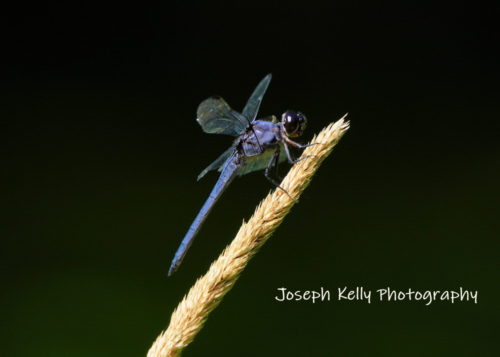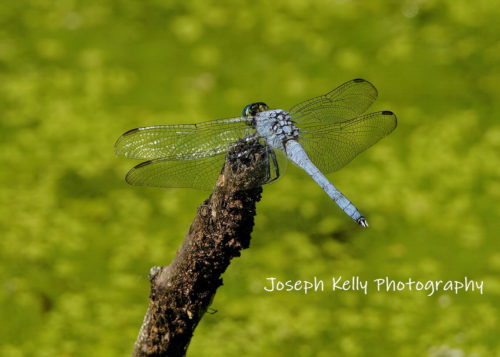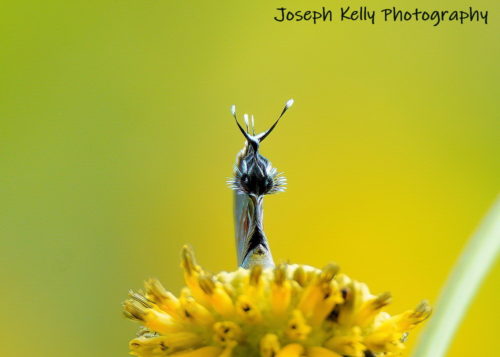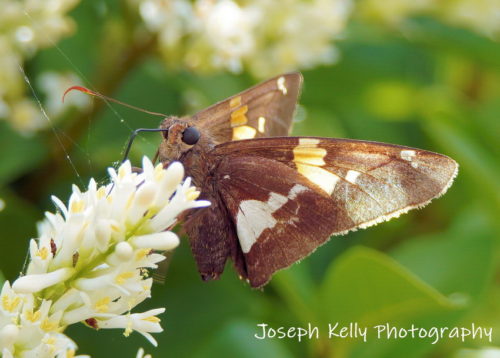Friday, September 11, 2020,
This is a female Blue Dasher Dragonfly. She is hovering just above a still part of the pond in preparation of laying her eggs. She will deposit her eggs, often one at a time, on plants in the water. In the photo below, you can see her dipping her tail end into the water. She does this repeatedly, perhaps in an effort not to place all of her eggs in one basket, er, leaf of Duckweed.
Dragonflies lay their eggs in still water so that the eggs do not get flushed out into areas where there may be fish who would be more than willing to gobble up their efforts. These eggs won’t hatch until next spring. The young that emerge are not mini dragonflies, rather, they are a mid-stage called Nymphs or Naiads. Naiads are very voracious hunters, eating everything from Mosquito larvae to even tadpoles. This “interval” stage often lasts years longer than the “adult” stage of mature dragonflies. This is not unusual for insect species. Some Cicadas enjoy a larval stage lasting as much as thirteen or even seventeen years before emerging as an adult. As the Cicada adult stage only lasts a few weeks, I sure hope their nymphs get a chance to do a lot of reading done in the meantime. JK.
JK

